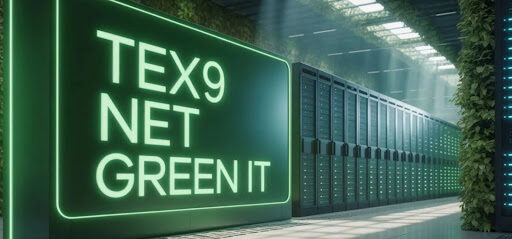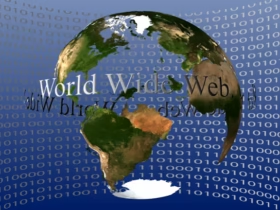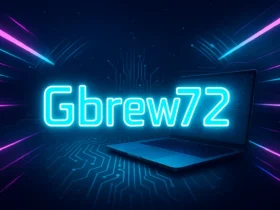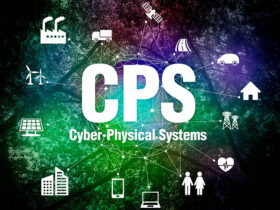In the fast-evolving landscape of technology and climate urgency, the term Tex9 net green it stands out as a visionary approach that combines environmental stewardship with digital innovation. It represents a set of strategies, practices, and principles aimed at minimizing ecological impact while maximizing technological efficiency. This article examines what Tex9 net green it entails, why it matters more now than ever, the latest methods for adopting it, challenges that come with change, and where this movement is heading.
What Exactly Is Tex9 Net Green IT?
Tex9 net green it refers to the framework and methodology by which organizations integrate green IT practices under the “Tex9 net” paradigm—emphasizing energy efficiency, reduced carbon emissions, sustainable infrastructure, responsible hardware lifecycles, and green software development. It’s not just a trend but a comprehensive commitment to make every aspect of IT—from data centers and networks to coding and disposal—aligned with environmental responsibility.
Key components include:
-
Using renewable energy sources to power systems
-
Designing software with low resource consumption
-
Managing e-waste responsibly
-
Optimizing cooling and energy use in hardware infrastructure
-
Establishing metrics to measure environmental impact
Why Tex9 Net Green IT Is More Crucial Than Ever
Several converging factors make the adoption of Tex9 net green it urgent and strategic:
-
Climate Change Pressure – Governments, consumers, and investors are demanding that organizations reduce carbon footprints. Meeting international climate targets often involves making IT operations greener.
-
Rising Energy Costs – Power usage, especially in data centers and continuous operation equipment, is costly. Efficiency saves money in the medium and long term.
-
Regulatory and Compliance Demand – Laws and standards (e.g. carbon reporting, emissions taxes) increasingly penalize un-sustainable practices. Organizations that already follow Tex9 net green it principles are better positioned.
-
Reputational Value – Consumers and partners are increasingly choosing companies that demonstrate environmental awareness. Green credentials have real business value.
-
Technological Feasibility – Innovations in renewable energy, efficient cooling, cloud computing, edge computing, AI optimization, and greener hardware make adoption of Tex9 net green it more practicable than before.
Key Pillars and Practices of Tex9 Net Green IT
To translate the concept of Tex9 net green it into practice, here are the essential domains and latest approaches:
1. Energy Sources & Infrastructure
-
Renewable Power Integration: Solar panels, wind farms, or green energy contracts are becoming standard for data centers. Organizations under the Tex9 net green it framework aim to source as high a percentage of renewable energy as possible.
-
Energy-Efficient Hardware: Choosing servers, routers, switches with high efficiency ratings; shifting to low-power chips, solid-state drives (SSDs), and efficient cooling systems.
-
Modern Cooling Technologies: Use of liquid cooling, immersion cooling, free-air cooling with local climate adaptation. These methods lower the power usage effectiveness (PUE) of data centers.
2. Virtualization, Cloud & Distributed Architectures
-
Cloud Migration: Moving workloads from many on-premises legacy servers to cloud platforms that are more energy efficient and often have better sustainability metrics.
-
Edge Computing: Placing computing resources closer to data sources to reduce latency and data transfer energy overhead—while ensuring those edge nodes follow green IT standards.
-
Containerization & Serverless Models: Kubernetes, Docker, or serverless functions help reduce idle resource waste and improve scaling efficiency, aligning with Tex9 net green it.
3. Software Efficiency & Sustainable Coding
-
Optimized Code: Reducing computational complexity, using efficient algorithms, avoiding over-engineering. Code that runs quicker or uses fewer resources contributes directly to lower energy demands.
-
Data Management Hygiene: Removing duplicate, unneeded data; compressing or archiving data; optimizing storage to use less energy and physical space.
-
Resource-Aware Development: Making developers aware of the energy cost of certain features or third-party services; integrating energy usage as a metric in software development lifecycle.
4. Hardware Lifecycle & Responsible Disposal
-
Longer Equipment Lifespan: Upgrading parts rather than replacing whole systems, refurbishing hardware when possible, using modular designs to extend usable life.
-
Certified Recycling & Disposal: Working with accredited e-waste recyclers; ensuring toxic components are handled safely; promoting circular economy practices in hardware.
-
Buy-Back, Take-Back Programs: Vendor or manufacturer programs to return old equipment for recycling or reuse.
5. Monitoring, Measurement & Transparency
-
Metrics & KPIs: Carbon emissions, energy consumption per user or per operation, PUE, server utilization rates, e-waste volumes.
-
Real-Time Monitoring Tools: Energy dashboards, sensors for temperature/humidity, automated alerts for inefficiencies.
-
Reporting & Audit: Internal and external reports (sustainability reports); third-party verification; aligning with global standards (e.g. ISO 14001, or ESG frameworks).
Step-by-Step: How to Implement Tex9 Net Green IT in Your Organization
Using Tex9 net green it principles requires a strategic, phased approach. Here’s a roadmap you can adapt to your size, resources, and goals:
| Phase | Action Items |
|---|---|
| Phase 1: Baseline & Awareness | Perform an audit of existing IT systems. Measure current energy consumption, server utilization, hardware age, and e-waste practices. Educate leadership and staff about Tex9 net green it values. |
| Phase 2: Strategy & Goal-Setting | Define measurable objectives (e.g. reduce energy usage by 30% in three years, cut e-waste by 50%). Devise budget, timeline, and responsible teams. Prioritize high-impact areas. |
| Phase 3: Infrastructure Upgrades | Replace outdated hardware, migrate to greener cloud providers, improve cooling systems, and integrate renewable energy where feasible. |
| Phase 4: Process and Software Optimization | Review codebases for inefficiencies; streamline storage; automate scaling; remove data clutter; adopt green software practices. |
| Phase 5: Lifecycle & Disposal Management | Implement hardware refresh cycles, recycling agreements, refurbishment programs, and proper disposal of harmful materials. |
| Phase 6: Monitoring, Reporting & Continuous Improvement | Continuously monitor energy usage and other KPIs; adjust operations based on data; publish reports; stay updated on new green technologies. |
Latest Trends & Innovations in Tex9 Net Green IT
Here are some of the more recent developments pushing Tex9 net green it forward in 2025-2026:
-
AI and ML-Powered Optimization: Systems that automatically shift workloads or adjust power and cooling in real-time based on usage patterns and forecasting.
-
Green Edge Nodes: Mini data centers or edge computing nodes built with sustainable design—solar-powered, low-energy components, often placed closer to end users to reduce network strain.
-
Carbon Accounting Tools: Sophisticated software to track emissions at granular levels—per server, per application—to make sustainability reporting more accurate and actionable.
-
Green Certifications & Standards: More organizations seek certifications specific to sustainable IT infrastructure. Green data center certifications, ESG ratings specifically for tech operations, and government incentives are increasing.
-
Circular Hardware Models: Businesses are forming partnerships to refurbish and re-use hardware instead of purchasing new. Modular design is becoming a competitive differentiator.
Benefits You’ll See from Tex9 Net Green IT
Adopting Tex9 net green it yields tangible and intangible returns. Some of the key advantages:
-
Lower Operating Costs: Electric bills, cooling costs, maintenance overhead drop with more efficient infrastructure.
-
Better Resource Utilization: Higher server utilization; less wasted capacity; leaner software.
-
Enhanced Brand Image & Trust: Stakeholders, customers, and regulators value sustainability, so being associated with Tex9 net green it boosts reputation.
-
Regulatory Readiness: Easier compliance with environmental laws, carbon taxes, government green procurement policies.
-
Environmental Impact Reduction: Less carbon emissions, less e-waste, less energy waste.
-
Innovation Boost: Teams exploring greener approaches often uncover efficiencies, new architectures, and novel methods that also improve performance or resilience.
Challenges in Adopting Tex9 Net Green IT
Realizing Tex9 net green it is not without obstacles. Understanding them helps in planning and risk mitigation.
-
Initial Investment & Capital Constraints – Green hardware and infrastructure upgrades may require significant upfront investment.
-
Legacy System Barriers – Older applications or hardware may not support newer energy-efficient practices or may be costly to adapt.
-
Skill Gaps – Teams may need retraining on green architecture, renewable energy systems, or energy-aware coding.
-
Measurement Complexity – Accurately tracking energy use, greenhouse gas emissions, and attributing reductions to specific changes can be hard.
-
Vendor and Supply Chain Issues – Finding green hardware, ensuring suppliers follow environmental standards, and managing logistics can complicate adoption.
-
Risk of Greenwashing – Claims of being “green” or “sustainable” must be backed by real metrics—or organizations risk reputation damage.
Real-World Examples & Hypothetical Use Cases
While there may not yet be many public cases explicitly labeled under “Tex9 net green it,” analogous efforts illustrate what success looks like.
-
Data Center Migration: A tech startup moving from self-hosted servers to a cloud provider powered by 100% renewable energy, achieving a 45% reduction in energy usage and 30% lower operational costs.
-
Retail Chain Edge Deployment: A retail chain installs edge computing nodes in its stores with solar panels and efficient cooling, reducing latency for customers while cutting network energy consumption.
-
Software Firm Lean Coding: A company audits its main application, removes redundant modules, compresses data, optimizes image sizes, and thereby sees server load drop by 25%, saving energy and extending hardware life.
-
Government Agency E-Waste Program: A municipal agency institutes a take-back program for old IT assets, refurbishes what’s usable, recycles safely, reducing landfill contributions and showing public environmental leadership.
The Future Horizon for Tex9 Net Green IT
Looking ahead, several emerging directions suggest how Tex9 net green it will keep growing and changing:
-
Zero-Carbon Data Centers: Facilities that not only rely fully on renewable energy but offset all emissions, including embodied carbon in construction and supply chains.
-
Green AI & “TinyML”: Machine learning models designed to run with minimal compute and energy, especially useful in edge devices.
-
Regulation-Driven Standards: Governments may introduce mandatory sustainability standards for data centers, energy consumption labeling for digital services, mandatory transparency in IT emissions.
-
Blockchain & Transparent Sustainability Metrics: Use of distributed ledgers to certify renewable energy usage, certify e-waste disposal, or track carbon offsets transparently.
-
Consumer Demand for Green Digital Products: Users increasingly choosing software, platforms, and digital services with strong environmental credentials will drive providers to embed Tex9 net green it into product offerings.
How You Can Start Right Now with Tex9 Net Green IT
To begin adopting Tex9 net green it, small steps are often most practical. Here are actionable tasks you can undertake immediately:
-
Conduct an energy audit of your servers, facilities, and networks.
-
Turn off or put to sleep idle devices; enforce power saving modes.
-
Consolidate under-utilized servers; retire legacy systems where feasible.
-
Refactor or remove unnecessary software features, clean up unused storage.
-
Partner with cloud services or data centers certified for sustainability.
-
Review procurement policies: favor eco-friendly hardware, modular systems, and vendors with green credentials.
-
Educate team members: include green IT in onboarding, development guidelines, and policies.
-
Monitor energy usage and emissions regularly; set up dashboards to visualize progress.
Conclusion
In sum, Tex9 net green it is not merely a buzzword—it encapsulates a rigorous, multi-dimensional strategy for ensuring that IT growth does not compromise environmental integrity. From energy-efficient hardware and cloud architectures to sustainable software practices and transparent measurement, this paradigm offers real return on investment, both for business performance and planetary health.
If you’re preparing for the next decade of technology, making sustainability central isn’t optional—it’s essential. Implementing Tex9 net green it now positions your organization to be resilient, efficient, trustworthy, and aligned with global demands.








Leave a Reply